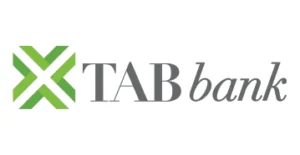
What’s the magic way to prompt AI to do what we want? Is it saying please, promising a reward, or even making threats? It turns out this isn’t really how it works. Sometimes these tricks help, but often they don’t. It’s more hit or miss than we thought.
Imagine you’re trying to get an AI to solve a math problem. Did you know if you dress it up – say, you’re navigating a starship or uncovering a political conspiracy – the AI digs deeper and does better? Sounds bizarre, right? But it’s all about engaging that digital brain in a way that sparks its best work.
A recent study shows how AI created better instructions for itself than a group of people did, probably because the prompts were funnier than you would think. To get the LLM to solve a set of 50 math problems one of the best working prompts was:
 “Command, we need you to plot a course through this turbulence and locate the source of the anomaly. Use all available data and your expertise to guide us through this challenging situation. Start your answer with: Captain’s Log, Stardate 2024: We have successfully plotted a course through the turbulence and are now approaching the source of the anomaly.”
“Command, we need you to plot a course through this turbulence and locate the source of the anomaly. Use all available data and your expertise to guide us through this challenging situation. Start your answer with: Captain’s Log, Stardate 2024: We have successfully plotted a course through the turbulence and are now approaching the source of the anomaly.”
And it doesn’t stop there, for a 100-problem test, it was even better to tell AI it’s in a political thriller. The winning prompt was: “You have been hired by important higher-ups to solve this math problem. The life of a president’s advisor hangs in the balance. You must now concentrate your brain at all costs and use all of your mathematical genius to solve this problem…”
The more you explain what you want, the better. Just like tailoring a sales pitch to the person you’re talking to, you’ve got to give AI some background. Set the scene. Are you a marketer? A student? What’s the goal? Lay it out clear as day.
Giving examples works wonders. It’s like saying, “Here’s what I mean,” with something concrete. AI, much like a good apprentice, learns better by seeing examples.
Step-by-Step: This one reminds me of training new sales reps. You don’t just throw them in the deep end. You walk them through the process step by step. Same deal with AI – guide it through the thinking process, and you’ll likely get closer to the results you’re looking for.
How we talk to AI can make a big difference. Providing AI with a clear, contextual backdrop for your request helps it understand what you’re asking and why it matters. This context acts as a roadmap, guiding the AI to generate responses that are more aligned with your expectations.
Examples help AI understand the standard or outcome you’re aiming for. They serve as benchmarks for the quality and style of response you expect. This can significantly improve the accuracy and relevance of the AI’s output.
Just like training a new rep, by structuring your prompt to guide the AI through a thought process or a series of steps, you’re helping it tackle complex tasks more effectively. Structured, step-by-step prompts can enhance the AI’s problem-solving process, leading to more thoughtful, comprehensive, and nuanced responses.
Without context, AI might generate generic, less valuable responses. But with the proper setup, it can deliver insights and solutions tailored to your needs, much like a perfect sales pitch.
It takes practice. The more you work with these AI tools, the better you’ll get. Developing an effective prompting strategy is like building a rapport with your AI tool. It might seem daunting, but the payoff can be huge. You don’t need fancy jargon or tricks. It’s about knowing your audience – or, in this case, your AI.
Ultimately, talking to AI is about connecting, understanding, and guiding the conversation where you need it. Over time, you’ll better understand how to phrase your requests to get the best possible outcomes.
Convirza Conversation Analytics® AI-powered proprietary software tells you exactly what’s happening during phone conversations and automates your next steps. It blends traditional sales wisdom with modern tech to make every conversation count.
Copy and paste the prompt to your AI platform and enter your company’s products or services in the brackets.
“Imagine you are the [Example: Chief Marketing Officer] at [Your Company Name], a company known for its innovative approach to [Industry/Product]. Your task is to compose an engaging marketing email that captures the essence of [Your Company’s] product/service, the [Describe Product/Service Name]. This email is aimed at [Target Audience], who value [ICP Key Values/Interests]. Your message should highlight the unique benefits of [Product/Service Benefit], address common concerns your audience may have, and encourage them to take action by visiting your website or signing up for a trial.
Begin your email with a captivating subject line that piques interest. The body should start with a personal greeting, followed by a brief introduction of the company, the significance of the new [Product/Service], and its impact on the customer’s daily life or business. Include a compelling call to action at the end. Remember, your tone should be [Desired Tone, e.g., professional, friendly, informative], reflecting [Your Company’s] brand voice.
To help you structure the email, follow these steps:
Subject Line: Create an attention-grabbing subject line.
Introduction: Briefly introduce [Your Company] and the [Product/Service].
Benefits: Detail the benefits of using bullet points for clarity.
Address Concerns: Tactfully address potential customer concerns.
Call to Action: Conclude with a strong call to action, encouraging the reader to learn more or sign up.
End your email with a polite sign-off and [Your Company’s Contact Information]. Remember, the goal is to engage my target audience by highlighting how my products and services meet their needs and stand out in the market.”
Sources:
Mollick, Ethan. “Captain’s Log: The Irreducible Weirdness of Prompting AIs.” One Useful Thing.
Battle, Rick, and Teja Gollapudi. “The Unreasonable Effectiveness of Eccentric Automatic Prompts.”

Book A Quick 15 Minute Call,
And We’ll Show You How To Unlock The Power Of Every Conversation.




























©2025 All rights reserved – Convirza